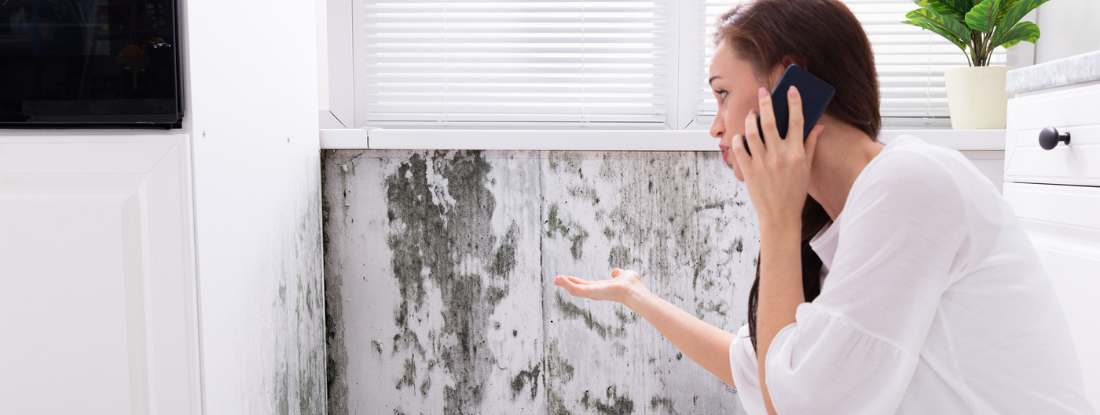Necessary Steps After Mold Remediation
Wiki Article
Specialist Tips for Article Mold Removal Success
In the realm of mold and mildew removal, effectively removing mold and mildew is only half the battle; the true obstacle lies in preventing its reappearance. By adhering to experienced tips and ideal techniques, people can safeguard their rooms versus mold revival and preserve a healthy and balanced indoor setting.
Display Humidity Degrees On A Regular Basis
After finishing mold and mildew remediation treatments, preserving optimum moisture degrees is vital to stop mold and mildew re-growth and make sure a healthy and balanced interior atmosphere. High moisture degrees above 60% develop a helpful setting for mold to grow, making routine checking a proactive step to prevent any future mold concerns.Making use of hygrometers or wetness meters can help in precisely gauging humidity degrees in various locations of the home. These tools give real-time information that enables remediation experts to make educated choices regarding ventilation, dehumidification, and various other required actions to keep suitable humidity levels post-remediation. Additionally, establishing a regular schedule for humidity checks, particularly in high-risk areas such as cellars, restrooms, and cooking areas, is a proactive approach to mold and mildew prevention. By constantly keeping an eye on moisture degrees, residential property proprietors can efficiently alleviate the danger of mold and mildew reoccurrence and maintain a healthy and balanced interior setting post-remediation.
Conduct Thorough Inspections Post-Remediation
Following the conclusion of mold and mildew removal procedures, it is essential to conduct comprehensive examinations to verify the effectiveness of the removal procedure. These post-remediation evaluations are vital in ensuring that the mold concern has been successfully addressed and that there is no reoccurrence or remaining mold and mildew growth. Evaluations must be performed by certified professionals that have expertise in identifying mold and examining indoor air top quality.During these assessments, different approaches such as aesthetic analyses, air tasting, and surface area sampling might be employed to thoroughly review the remediated areas. Aesthetic analyses involve an in-depth examination of the facilities to check for any noticeable signs of mold and mildew development or water damage. Air sampling helps in figuring out the air-borne mold spore levels, while surface area sampling can find mold and mildew bits on surfaces.
Implement Proper Air Flow Techniques
After guaranteeing the effectiveness of the mold and mildew removal process with comprehensive assessments, the following critical action is to concentrate on carrying out correct air flow strategies. Appropriate air flow is important in stopping mold and mildew reoccurrence by regulating dampness levels and promoting air flow. To achieve this, it is recommended to make use of exhaust followers in locations susceptible to high humidity, such as cooking areas and washrooms. Additionally, opening doors and windows when climate allows can aid enhance air flow and decrease moisture build-up. Air dehumidifiers and purifiers are additionally important tools in maintaining optimal interior air high quality.
Proper air flow not only help in protecting against mold development yet likewise contributes to the overall health and wellness and comfort of occupants. By making certain ample ventilation throughout the property, you can minimize the risk of mold regrowth and develop a much healthier living environment.

Usage Mold-Resistant Materials for Repairs
To improve the lasting efficiency of mold and mildew removal efforts, integrating mold-resistant products for repairs is crucial in minimizing the risk of future mold development. Mold-resistant products are created to hold up against wetness and hinder mold growth, making them a vital choice for locations prone to moisture and humidity. When repairing locations impacted by mold, making use of materials such as mold-resistant drywall, mold-resistant paints, and mold-resistant caulking can aid stop mold reoccurrence.Mold-resistant drywall is an outstanding option to traditional drywall in areas like washrooms and basements where moisture levels are greater. When subjected to damp problems, this kind of drywall has a special covering that withstands mold development also. In addition, using mold-resistant paints containing antimicrobial agents see can additionally prevent mold and mildew development on wall surfaces and ceilings.
In locations where moisture prevails, such as kitchen areas and shower rooms, utilizing mold-resistant caulking around bathtubs, sinks, and home windows can aid secure out water and prevent mold from holding in fractures and holes. By investing in these mold-resistant products during repair work post-remediation, you can significantly reduce the possibility of future mold issues and keep a healthier indoor atmosphere.
Maintain Tidiness and Address Water Issues
After mold and mildew removal, it is crucial to keep a clean atmosphere to stop the regrowth of mold and mildew. Leaks, water intrusion, or high humidity degrees can develop the ideal breeding ground for mold, so it is important to take care of any type of water-related issues promptly.To maintain cleanliness, consider using HEPA filters in vacuums and air cleansers to trap mold and mildew spores and prevent their flow airborne. In addition, guaranteeing proper ventilation in locations susceptible to moisture accumulation, such as restrooms and kitchen areas, can help maintain humidity levels in check. By remaining attentive regarding sanitation and resolving water issues promptly, you can efficiently prevent mold reinfestation and keep a healthy and balanced interior environment.
Conclusion

In the realm of mold and mildew remediation, effectively eradicating mold is just half the battle; the real challenge exists in preventing its reappearance. After finishing mold removal treatments, keeping optimum humidity degrees is vital to stop mold and mildew re-growth and make sure a healthy indoor environment. High humidity levels over 60% produce a helpful setting for mold and mildew to prosper, making routine keeping an eye on an aggressive procedure to protect against any kind of future mold and mildew problems.
visite site To boost the long-term performance of mold remediation initiatives, integrating mold-resistant products for fixings is essential in minimizing the threat of future mold growth. After mold removal, it is essential to maintain a clean setting to protect against the regrowth of mold and mildew.
Report this wiki page